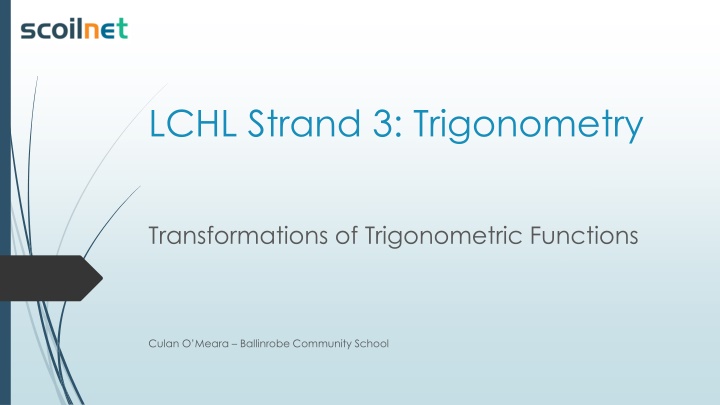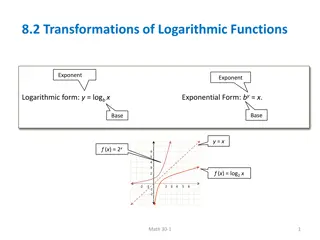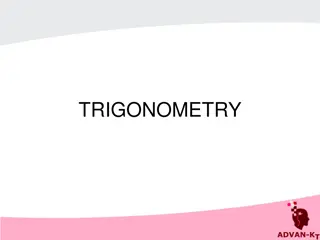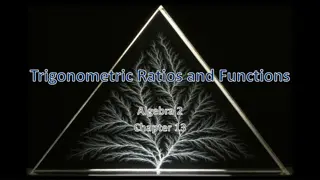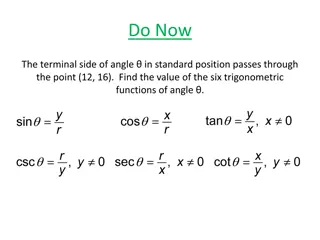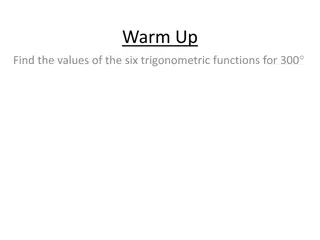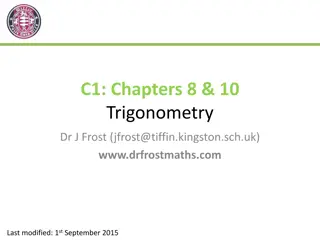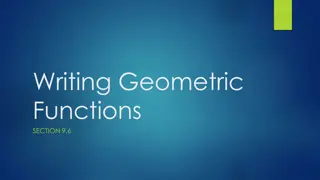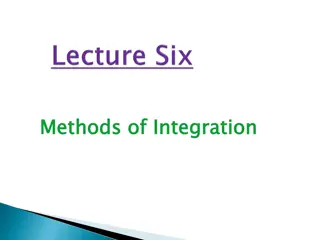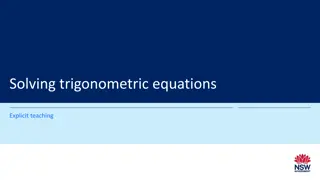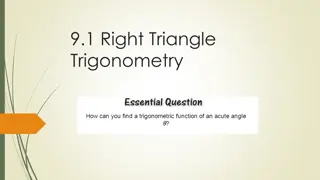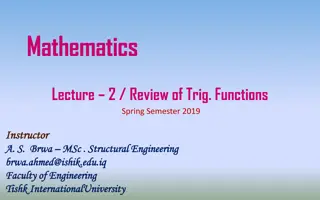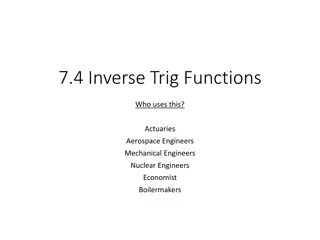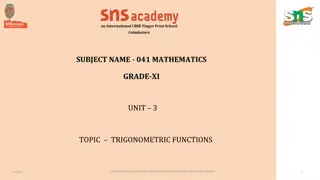Trigonometric Functions and Transformations
Trigonometry deals with transformations of trigonometric functions, exploring concepts such as amplitude, range, period, and more. Dive into the world of trigonometry and understand how adjustments to variables change the functions. Author Culan O'Meara provides insightful explanations and examples to enhance your understanding.
Download Presentation

Please find below an Image/Link to download the presentation.
The content on the website is provided AS IS for your information and personal use only. It may not be sold, licensed, or shared on other websites without obtaining consent from the author.If you encounter any issues during the download, it is possible that the publisher has removed the file from their server.
You are allowed to download the files provided on this website for personal or commercial use, subject to the condition that they are used lawfully. All files are the property of their respective owners.
The content on the website is provided AS IS for your information and personal use only. It may not be sold, licensed, or shared on other websites without obtaining consent from the author.
E N D
Presentation Transcript
LCHL Strand 3: Trigonometry Transformations of Trigonometric Functions Culan O Meara Ballinrobe Community School
Functions: Key words Recap Variable: A symbolwe use to describe a number we don t know the value of or where value can change Constant: A number that doesn t change e.g 11, -2, 54. Not attached to any variable. Coefficient: this is a number attached to a variable(normally in front) e.g. with the term 2 .2 is the coefficient of Y-intercept: Where the function crosses y-axis X-intercept: Where function crosses x-axis also called a Root Author: Culan O'Meara
Trigonometric Functions: Key words Recap Period: How often the function starts to repeat (read from horizontal axis of graph). Written as number of units e.g. 2? (radians) Range: Set of actual outputs (read from vertical axis). Written as [Minimum, Maximum] Amplitude: How far from centre position the graph goes. Can be easily calculated as half the range. e.g. if range is [-1,1], then amplitude is 1 Asymptotes: Lines that a function will never touch Author: Culan O'Meara
Trigonometric Functions: Transformations With trigonometric functions of the form ? ? = ? + ??????or ? ? = ? + ??????we can change ?,? ?? ?to transform the function. Remember, the ? or constant part of any trigonometric function is also the midline point around which the function goes up and down. If there is no constant visible, it means the function midline is 0. If we adjust ?, then we will change the amplitude and range of the function. If we adjust ?, then we will change the width/period of the function. Further from 0 = narrower Closer to 0 = wider Author: Culan O'Meara
Trigonometric Functions: Transformations With the example shown, the original function(in blue) is ? ? = 1 + ???? When we increase the value of ?, we can see that the new function ? ? = 2 + ????has moved up ? ? = ? + ???? ? ? = ? + ???? Author: Culan O'Meara
Trigonometric Functions: Transformations With the example shown, the original function(in blue) is ? ? = ???? When we increase the value of ?, we can see that the new function ? ? = 2????has stretched vertically. That means the Range and Amplitude are changed but NOT the period ? ? = ????? ? ? = ???? Author: Culan O'Meara
Trigonometric Functions: Transformations With the example shown, the original function(in blue) is ? ? = ???? When we increase the value of ?, we can see that the new function ? ? = ???2?has narrowed. That means the Range and Amplitude are NOT changed but the period has. ? ? = ????? ? ? = ???? Author: Culan O'Meara
Over to you! Use worksheet and Geogebra file to discover patterns Author: Culan O'Meara
